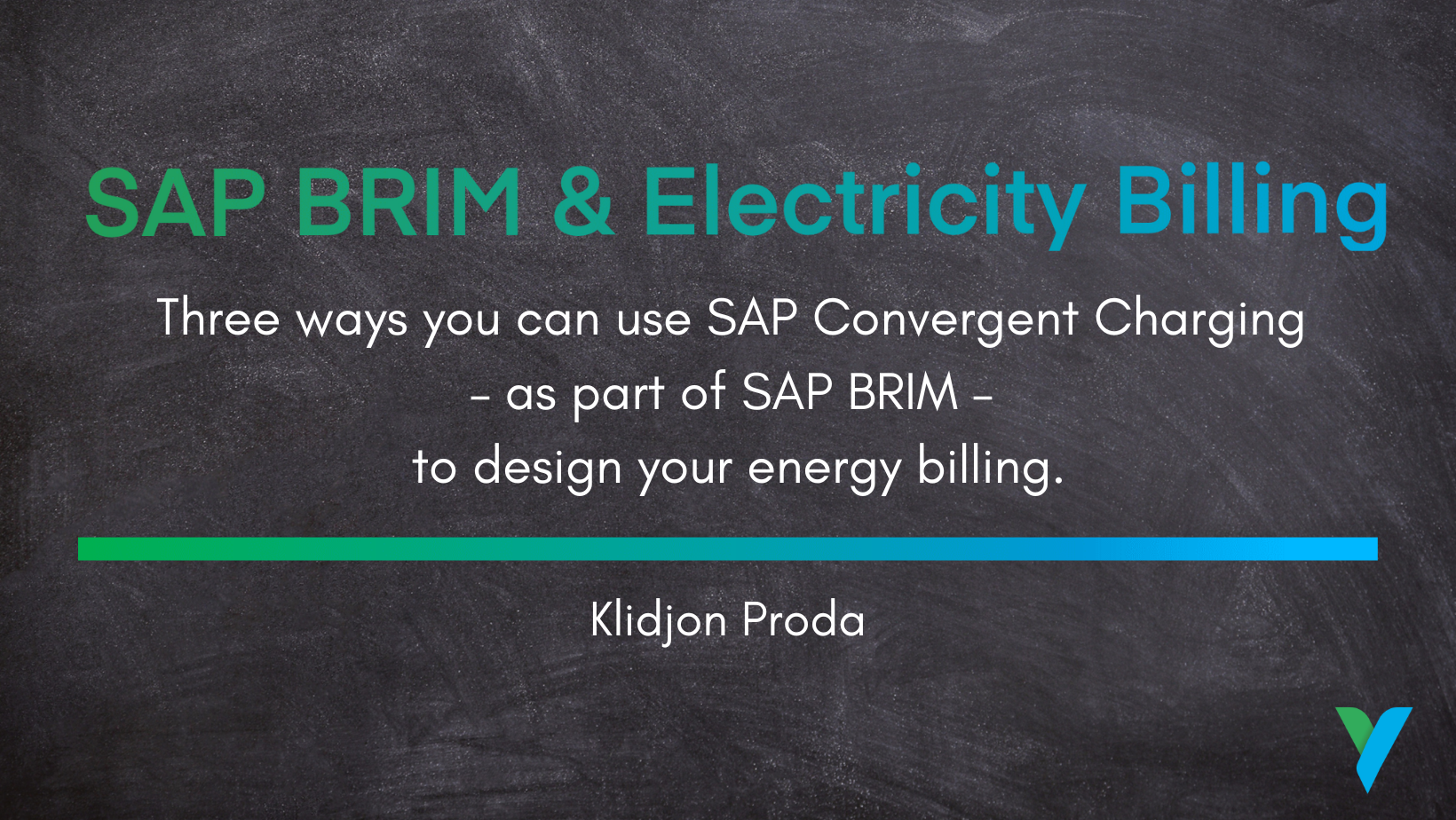Three ways you can use SAP Convergent Charging – as part of SAP BRIM – to design your energy billing.
For quite some time now, energy prices have been in the spotlight and are one of the most sensitive and discussed topics. A wide variety of factors lead to frequent price changes, posing a huge challenge for energy providers. In addition, energy providers are transforming their business to produce and trade with clean and sustainable energy. Furthermore, the consumer is expected to become more and more central by increasing efficiency in service.
With this article, you will get an insight into how you can use SAP Convergent Charging for transparent and flexible billing and how to react to constant price changes with demand-driven charging and billing. Please find below three options:
Be real-time and manage budgets with Online Mode
Online Charging enables the system to process incoming chargeable items sent by a third-party mediation system in a real-time connected mode. The online mode is necessary for prepaid customers dealing with prepaid balance and refill process, for example, when charging an electric car in a station. This feature consists in the following process steps:
- Executing the price plan – responsible for calculating the amount, such as prices, fees, or credit/debit in counters.
- Executing the charging plan – responsible for updating the determined account with the amount calculated by the price plan.
- Generate the data files after the rating process – which have all the information necessary for billing and invoicing.
Online charging enables the execution of the following operations in real time:
- Monetary or free units balance check status operation – provides the possibility to implement any policy control, based on the current balance status of service usage. For example, implement kw usage service when 300 kw in a month is consumed. Allow customers to continue to use the electricity but with a higher price, usage service reduction profile once 300 KW are consumed monthly.
- Event or session-based operations – session-based operations are typically taking place when dealing with charging a fixed consumption of energy. After consuming the first session, it is possible to consume a second session, but with a different price and with paying for each usage.
Be classic with Offline Mode
Offline Charging is similar to the Online mode, apart from the fact that it works in a disconnected, non real-time mode with the meditation system. The offline mode:
- Does not provide the possibility to perform credit-control checks.
- Only provides the possibility to use postpaid accounts for your business, as prepaid accounts only work within connected systems (online mode).
- Gives the possibility to the customer to pay for what he consumes not in real time.
Bill when needed with the Deferred Mode
Another charging mode in SAP Convergent Charging is the deferred mode. This mode could be useful when your business deals with chargeable items (CITs) and do not contain any information related to prices – for example: when the price depends on a consumption volume which is computed at the end of each month. In such a scenario the chargeable items are acquired and stored in SAP Convergent Invoicing (also part of SAP BRIM) as so-called unrated consumption items. At a deferred time (e.g., at month-end) these consumption items are enriched with price information. Afterward, SAP Convergent Invoicing transfers the items to SAP Convergent Charging for final charging.
With these three main charging modes, provided in SAP Convergent Charging together with SAP BRIM, it is possible to handle your electricity billing in a flexible and customer-friendly way. Depending on the requirements any of them come to your help and more importantly, they can be implemented separately or all together covering your business scenarios.
~~~
Link zum LinkedIn Beitrag: https://www.linkedin.com/pulse/sap-brim-electricity-billing-klidjon-proda-1wz7c
